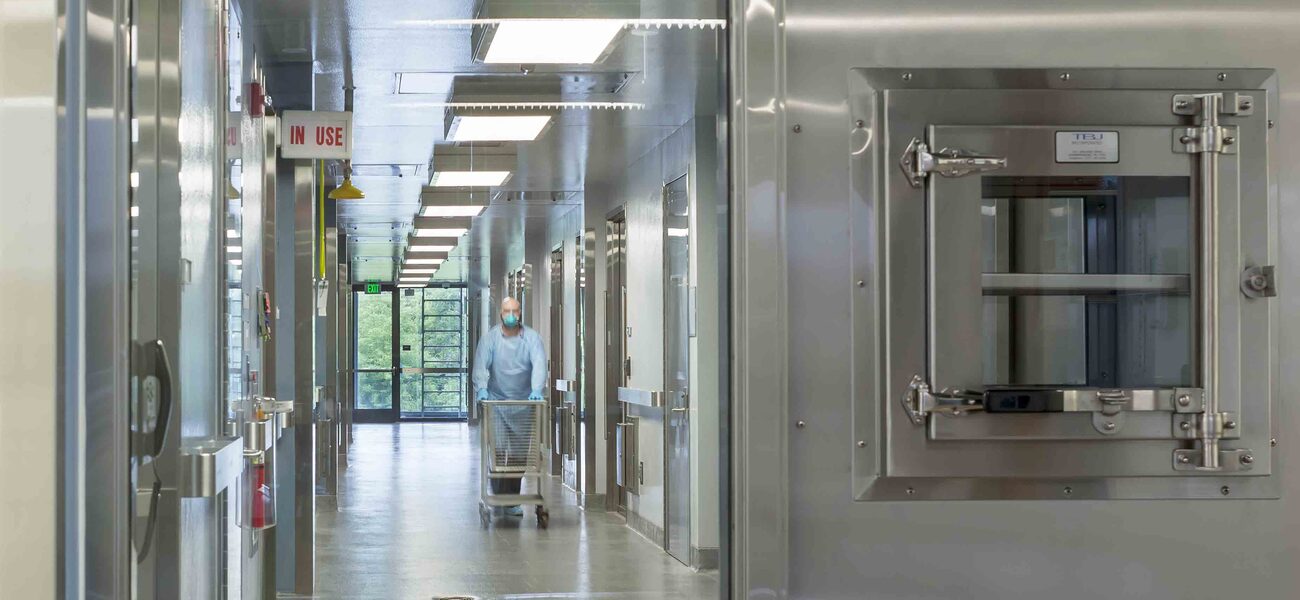The award-winning Eva J. Pell Laboratory provides Biosafety Level Three (BSL-3) and Animal Biosafety Level Three (ABSL-3) high-containment laboratory space for pathogen and toxin research to support a growing infectious disease research program at Pennsylvania State University. The facility has been designed to support advanced research using CDC/USDA Select Agents. As many as 15 researchers—working in BSL-2, BSL-3, and ABSL-3 containment—study human and animal health issues they were previously unable to safely address on campus. Working synergistically with the adjacent Animal Diagnostic Lab (ADL), the facility broadens Penn State’s support of the local agricultural community.
The Pell Lab, funded in part with a 2009 American Reinvestment and Recovery Act (ARRA) grant through the NIH, contains both a primary and a redundant backup unit for systems related to the biocontainment zone, in accordance with NIH design requirements.
The building can accommodate multiple research groups in the 6,500 nsf of high-containment research space, plus provide additional square footage for supporting offices and conference space. The conference room serves as a training space, as well as a break room. The Pell Lab was optimized to provide the maximum amount of high-containment research space, so most of the researchers in this facility also have labs (lower containment level) and offices elsewhere on campus.
The containment area is organized into suites of rooms to support multiple research projects simultaneously. The suite configuration minimizes the potential for cross-contamination and adds internal layers of separation, enhancing safety in the event of an accidental spill or release within the facility. Each laboratory suite contains either one or two holding spaces linked directly to a procedure space. This approach mitigates transport-related bio-stress issues for animal subjects, which can skew research findings.
Outside of the containment barrier, there is a small BSL-2 lab for preparation work that can be passed into the high-containment zone via a pass-through cabinet.
Even though bio-containment facilities require single-pass air to maintain negative directional airflow, the building was designed to be as efficient as possible. The building envelope performs 30 percent better than comparative baseline, and the lab is tracking to be certified LEED Gold.
The Pell Lab received an AIA 2013 Honor Award, and was awarded Lab of the Year High Honors by R&D magazine.
| Organization | Project Role |
|---|---|
|
Payette
|
Architect and Landscape Design
|
|
Torcon Inc.
|
Builder
|
|
Merrick & Company
|
MEP Engineering and Structural Design
|
|
Sweetland Engineering
|
Civil Engineering
|
|
Automated Logic
|
Controls
|
|
Tecniplast USA
|
Decontamination Lock
|
|
Dudick
|
High-Performance Coatings
|
|
Wausau Metal, Inc.
|
Window Systems
|
